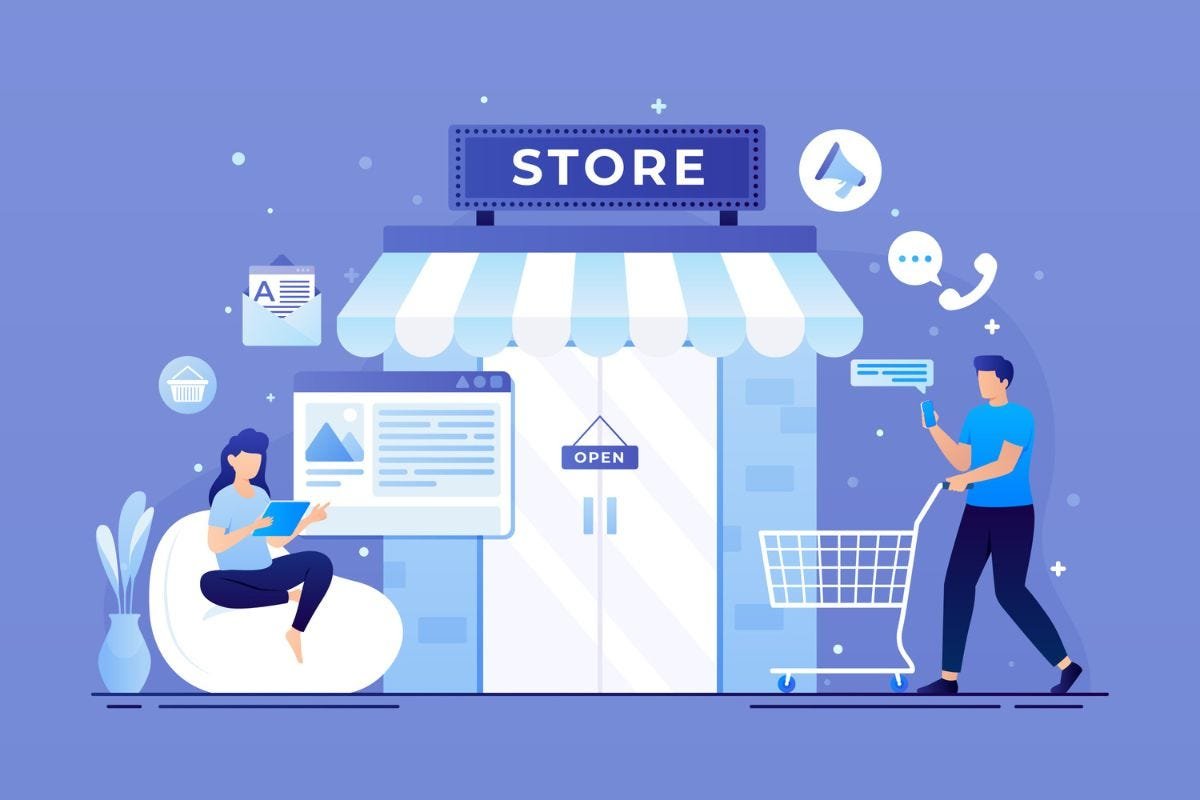In the landscape of retail, the convergence of online and offline shopping experiences has transformed the way consumers interact with brands and make purchasing decisions. The integration of Web&Store has become a cornerstone of modern retail strategies, enabling businesses to provide seamless and personalized experiences across multiple channels. This article explores the evolution of web and store integration, the challenges and opportunities it presents, and the strategies retailers are employing to stay ahead in an increasingly competitive market.
The Rise of E-commerce
The advent of the internet ushered in a new era of retail, allowing businesses to reach customers beyond geographical boundaries and operate around the clock. E-commerce platforms emerged as virtual marketplaces where consumers could browse, compare, and purchase products with unprecedented convenience. The convenience and accessibility offered by online shopping quickly gained popularity, leading to exponential growth in e-commerce sales year after year.
Challenges of Online Retail
While e-commerce offered numerous benefits for both consumers and businesses, it also presented its own set of challenges. One of the primary concerns for online retailers was the lack of physical interaction with customers. Unlike traditional brick-and-mortar stores, e-commerce platforms struggled to replicate the personalized shopping experience that many consumers valued. Additionally, issues such as shipping costs, delivery times, and product returns posed logistical challenges for online retailers.
The Role of Brick-and-Mortar Stores
Despite the rapid growth of e-commerce, brick-and-mortar stores remained an essential component of the retail landscape. Physical stores offered tangible experiences that online platforms couldn’t replicate, such as the ability to see, touch, and try products before making a purchase. Moreover, stores served as brand touchpoints, allowing retailers to establish a direct connection with customers and showcase their products in a curated environment.
The Emergence of Omni-channel Retailing
Recognizing the complementary strengths of both online and offline channels, retailers began embracing an omni-channel approach to reach consumers wherever they were. Omni-channel retailing aimed to provide a seamless shopping experience across multiple touchpoints, allowing customers to interact with brands through a variety of channels, including websites, mobile apps, social media, and physical stores. This integrated approach blurred the lines between online and offline retail, enabling retailers to leverage the strengths of each channel to create cohesive and engaging shopping experiences.
Web&Store Integration
Central to the concept of omni-channel retailing is the integration of Web&Store capabilities. This integration involves leveraging technology to bridge the gap between online and offline channels, enabling customers to move seamlessly between digital and physical touchpoints throughout their shopping journey. Key aspects of web and store integration include:
Unified Inventory Management: Retailers are leveraging advanced inventory management systems to synchronize inventory data across online and offline channels. This ensures that customers have access to real-time information about product availability regardless of the channel they are using.
Click-and-Collect Services: Many retailers now offer click-and-collect services that allow customers to purchase products online and pick them up at a nearby store. This hybrid model combines the convenience of online shopping with the immediacy of in-store pickup, providing customers with greater flexibility and control over their shopping experience.
In-Store Digital Experiences: Retailers are enhancing the in-store experience by integrating digital technologies such as interactive displays, augmented reality (AR), and digital signage. These technologies enable retailers to provide personalized recommendations, product information, and immersive experiences that enrich the shopping experience and drive engagement.
Personalized Marketing: By leveraging data analytics and customer insights, retailers can deliver personalized marketing messages and promotions tailored to individual preferences and behavior. Whether online or in-store, personalized marketing helps retailers engage customers more effectively and drive conversion rates.
Benefits of Web and Store Integration
The integration of web and store capabilities offers numerous benefits for both retailers and consumers:
Enhanced Convenience: Web and store integration provides customers with greater flexibility and convenience by allowing them to seamlessly transition between online and offline channels throughout their shopping journey.
Improved Customer Experience: By providing a cohesive and personalized shopping experience across multiple touchpoints, retailers can enhance customer satisfaction and loyalty, driving repeat business and positive word-of-mouth.
Increased Sales and Revenue: Omni-channel shoppers tend to spend more than single-channel shoppers, making web and store integration a lucrative strategy for driving sales and revenue growth.
Optimized Operations: Unified inventory management and streamlined processes enable retailers to optimize their operations and reduce costs associated with inventory management, fulfillment, and logistics.
Challenges and Considerations
While web and store integration offers significant benefits, it also presents its own set of challenges and considerations:
Technology Implementation: Implementing the necessary technology infrastructure to support web and store integration can be complex and resource-intensive, requiring investments in hardware, software, and IT expertise.
Data Privacy and Security: Collecting and managing customer data across multiple channels raises concerns about data privacy and security. Retailers must implement robust data protection measures to safeguard customer information and comply with regulatory requirements.
Organizational Alignment: Achieving seamless integration between online and offline channels requires close collaboration and alignment across various departments within the organization, including marketing, sales, IT, and operations.
Customer Expectations: As consumer expectations continue to evolve, retailers must stay agile and responsive to changing preferences and behaviors. This may require ongoing investments in technology, staff training, and customer service initiatives.
Future Trends and Outlook
Looking ahead, the integration of web and store capabilities is expected to continue evolving as retailers adapt to changing market dynamics and consumer preferences. Key trends shaping the future of web and store integration include:
Advancements in Technology: Continued advancements in technology, such as artificial intelligence (AI), machine learning, and the Internet of Things (IoT), will enable retailers to deliver more personalized and immersive shopping experiences across online and offline channels.
Expansion of Contactless Commerce: The COVID-19 pandemic accelerated the adoption of contactless commerce, prompting retailers to invest in contactless payment options, virtual try-on experiences, and other touchless solutions to meet the evolving needs of consumers.
Focus on Sustainability: Increasingly, consumers are prioritizing sustainability and ethical sourcing when making purchasing decisions. Retailers that prioritize sustainability in their operations and supply chains will be well-positioned to attract environmentally conscious consumers.
Rise of Social Commerce: Social media platforms are becoming increasingly influential in the shopping journey, with many consumers discovering and purchasing products directly through social channels. Retailers that integrate social commerce capabilities into their omni-channel strategy stand to benefit from this trend.
Conclusion
The integration of web and store capabilities represents a fundamental shift in the retail landscape, blurring the lines between online and offline shopping experiences. By embracing an omni-channel approach and leveraging technology to bridge the gap between digital and physical channels, retailers can create cohesive and personalized shopping experiences that drive customer satisfaction, loyalty, and revenue growth. As consumer expectations continue to evolve, retailers must remain agile and proactive in adapting their strategies to meet the changing needs of the market. By doing so, they can position themselves for success in an increasingly competitive retail environment.













+ There are no comments
Add yours